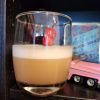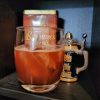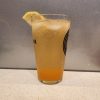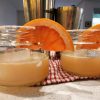Whether you like to mix spirits to make cocktails or if you just like them on your own, you may wonder how they’re made. The short answer is that some sort of sugar is fermented to create what’s called a wash, which has a lower alcohol content than spirits (usually anywhere from about 5%-20% alcohol by volume, depending on what you’re fermenting). The wash is then put into a still. The still separates the alcohol from everything else in the wash so that the alcohol becomes more concentrated. From there, the distilled spirit is often aged (depending on what you’re making), diluted, and bottled for consumption.
Obviously there’s more depths to those steps, and we’ll get into it! But we thought we’d start there to give you an overview. So, read on for a step by step guide on distilling spirits.
Quick but important note: if you don’t know what you’re doing, distilling can be dangerous both as a process and if you consume the finished process. This is not intended to be a comprehensive guide on how to distill things yourself. Rather it’s meant to be a summary of the process for those who are curious. If you wish to learn how to distill yourself, take a course.
Step 1: Creating Something Fermentable
Fermentation is the process of turning sugar into alcohol. Generally this is done by adding yeast to a sugar rich environment. The yeast eat the sugar and convert it to alcohol. So the first step to distilling is to create something that’s fermentable. There are a variety of ways to do this and what you use to ferment will change what you’re ultimately making. Let’s go through some common things that are fermented.
 Fermenting grains
Fermenting grains
Grains need to be mashed in order to become fermentable. This isn’t what it sounds like! Mashing involves soaking malted grain in hot water (usually around 65-70 degrees Celsius). This temperature allows the release of enzymes that break down the more complex sugars in the grain into more simple syrups that yeast can easily eat and turn into alcohol later. The exact temperature that you mash grains at depends on the type of grain as well as specific recipes, as the time the mash process takes. After mashing, the water is drained and you have a nice solution full of simple sugars that’s ready to ferment!
Grains are typically used to make Whiskey of different varieties and even Vodka (although Vodka is usually made in a different kind of still, filtered, and unaged).
Fermenting fruits
Fruits are another very common thing to ferment, and getting them fermentable is pretty simple: juice them. Unlike grain, which needs its sugars broken down, sugars from fruits are already pretty simple so are easily fermentable. So just make some fruit juice, throw in some yeast, and it will start fermenting.
You can ferment any fruit juice, but some are more popular than others. Typically, any distillate from a fermented fruit juice is referred to a Brandy, but there are exceptions. Applejack is a distilled Apple Juice that’s distilled in a different way from Brandy. You can also make Vodka from fruit juices if you filter it and don’t age it, but that’s pretty unusual.
Fermenting Pure Sugar
You can also go straight to the source: sugar cane. Sugar cane and related products like molasses are also often fermented and distilled. Obviously sugar cane is a simple sugar, so it’s easily fermentable. The processing of sugar cane into sugar also creates byproducts, and those are fermentable as well.
Sugar cane (and its byproducts) are usually distilled into various kinds of Rum, but it’s not unheard of for them to become Vodka as well.
Other fermentables
You can ferment pretty much anything with sugar in it, so long as you can make the sugars simple enough to be eaten by yeast. For example, you may have heard of Agave being used to create Mezcal and Tequila. Potatoes are also sometimes used to make Vodka.
And of course we haven’t touched on Gin here. Gin usually uses a neutral base alcohol (like Vodka) and adds botanicals to it.
Step 2: Create the wash by fermenting the fermentables
Once you have a liquid packed with sugar, you want to ferment it. To make something ferment, all you need to do is add yeast. As mentioned a couple times here, the yeast eat sugars and convert them into alcohol. The other by product of this reaction is Carbon Dioxide, so you’ll often see bubbles start to form during fermentation.
Different yeasts will be used depending on what’s being made and the distilling tradition. It’s also not entirely unheard of to use wild yeasts that just naturally find their way to the magic sugar water; again, this depends on who’s making what. Similarly, the amount of time and the temperature that things are fermented at (both very important) vary depending on who’s making what, but things are usually kept roughly at about 15-20 degrees Celsius for about two weeks or so.
When this is all done you have something called a wash that is anywhere from 5-20% alcohol by volume. We’re now going to try and increase the alcohol content through distillation so that we have a spirit.
Step 3: Distilling
Basically speaking, distillation (in this context) is the process of increasing the alcohol concentration of a liquid. This is done using a still.
The wash that was created in Step 2 is a mixture of mostly alcohol and water, but there are other things in there too; mostly flavours from whatever you made the wash out of, some of which you may want to retain if it suits what you’re making. So what a still does is separate the alcohol from the water and other stuff. How does it do this?
Well, alcohol boils at about 78 degrees Celsius while water boils at 100. So, keeping the liquid at this relatively low temperature ensures only the alcohol evaporates and everything is left behind. If you want all the lingo, the still is the bit doing the heating, then everything evaporates up to the condenser (where it condenses back into a liquid), then collected in the receiver.
Of course this process isn’t perfect so some water and other flavour elements still evaporate. Many distillers will distill things multiple times before they get a solution that’s about 95% alcohol by volume. Some will try to retain flavours from the wash, others will try to eliminate them.
 Step 4: Aging
Step 4: Aging
Most of the time, but not always, a spirit is then aged, typically in wooden barrels made from Oak (although other woods are used). If you’re making Vodka or a neutral base spirit for Gin, you’ll usually skip the aging process though.
Regardless of what you used to make the wash, your original distillate will be clear, it’s not until aging is done that colour begins to be added. This is why spirits that are aged for longer are a deeper shade of brown. Other than adding colour, the aging also imparts flavours from the wood being used for aging. If a distiller is being creative, they may use a barrel that’s already had something in it in order to impart even more flavour into their spirit. A common example here is Scotch Whiskey distillers using old Sherry barrels for their aging.
The amount of time and how a spirit is aged heavily depends on local regulations as well as what’s being made. Aging can drastically change a spirit style!
Other Steps
After aging (if it’s done), there are a number of other steps that vary depending on who’s making what.
For example, spirits age at different rates in different barrels, so the distiller may blend together different barrels and batches to create a consistent flavour for customers across time. Some distillers may even add further flavours.
Then, of course, before everything is done, the spirit needs to be bottled so that it can be enjoyed!
And that’s it! If you’re thirsty, perhaps use some of the spirits you have at home to make yourself a cocktail. If you don’t know what to make, try our cocktail recipe generator to see what you can make with the ingredients you have on hand.
Cocktails with similar ingredients:
No similar cocktails.

 Fermenting grains
Fermenting grains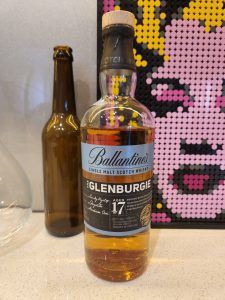 Step 4: Aging
Step 4: Aging
